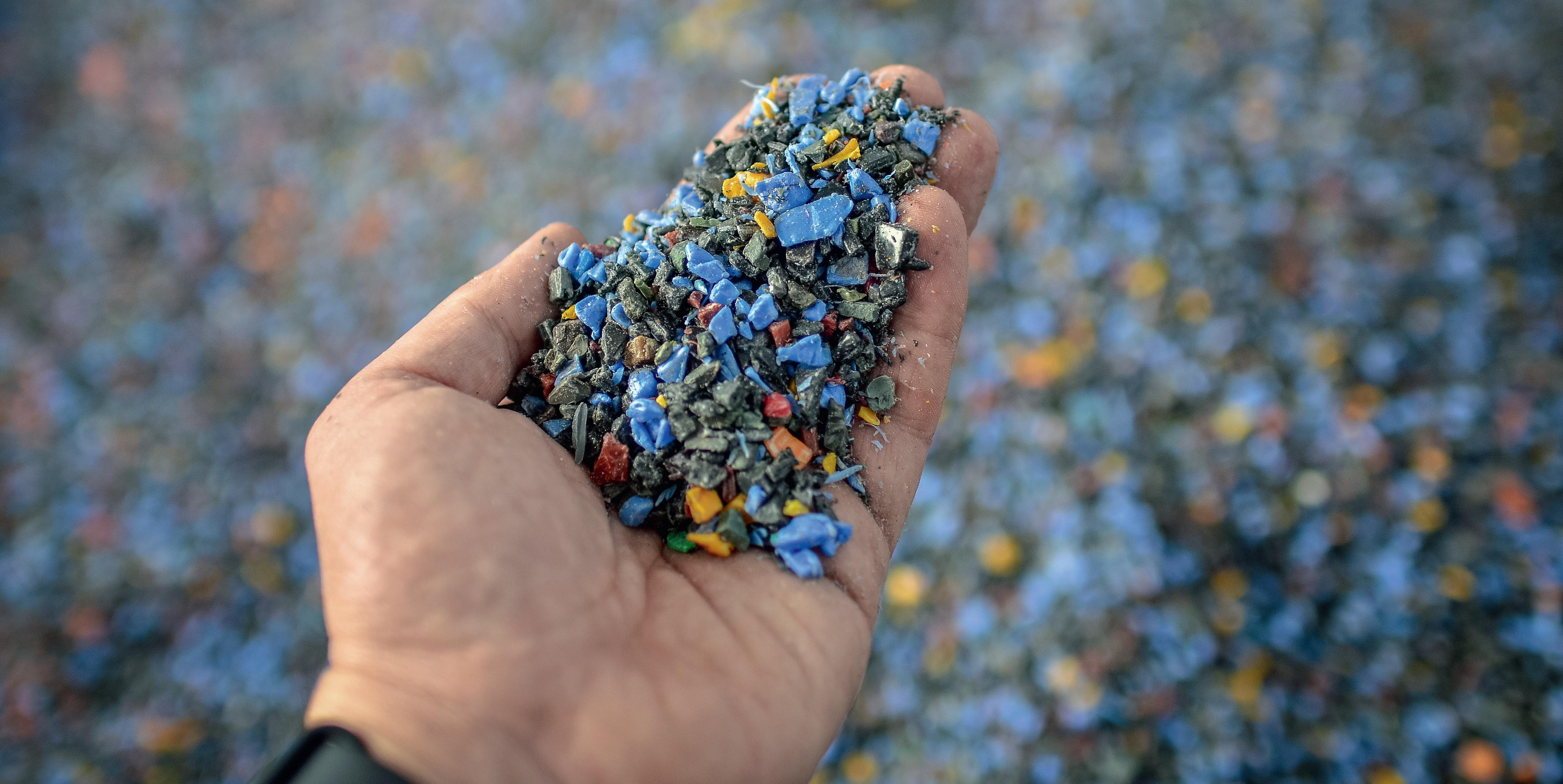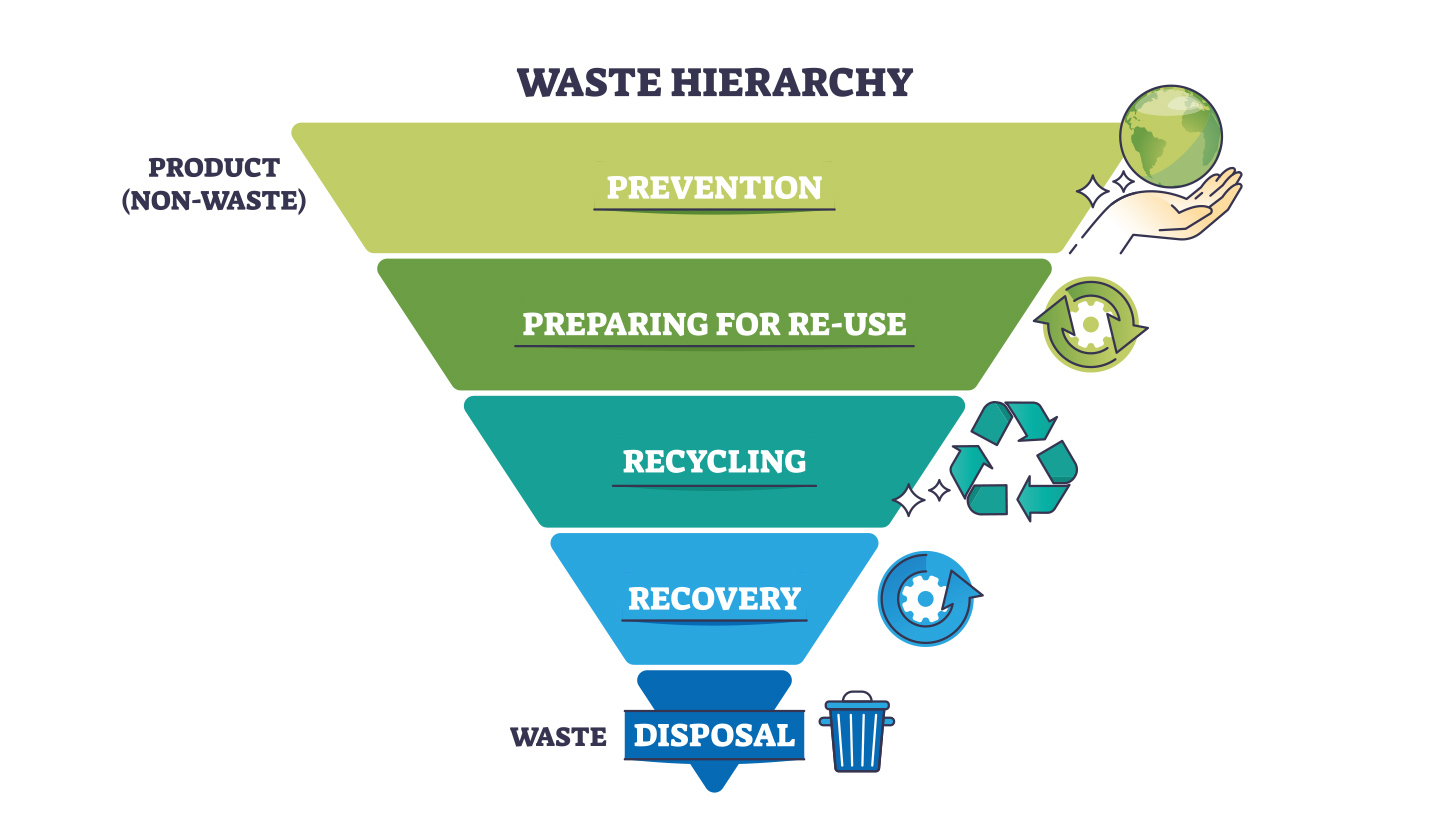
10 minute read
“There is no waste at all, only raw materials!”
“There is no waste at all, only raw materials!”
An interview with Alexander Maak about the circular economy
Used frames and spectacle lenses, swarf, packaging or demo lenses – all those things are waste, at least in the eyes of most consumers and companies. Alexander Maak, on the other hand, contradicts this way of thinking and says there are only valuable raw materials. The Managing Director of Interzero is an expert when it comes to the circular economy. This concept offers companies the unique opportunity to secure direct access to raw materials on the one hand, and to have a unique selling point (USP) on the other hand – and all this in the name of sustainability! MAFO talked to Maak about how this works exactly and why circular economy is rewarding for every branch. By Hanna Diewald
Mr. Maak, you say there is no waste at all, only raw materials. What exactly do you mean by that?
It is quite simple: the world has to learn how to close cycles. We consume an enormous amount of the earth´s raw materials. This year, on August 2nd, we already reached Earth Overshoot Day, the day on which we had already used up all of the earth´s raw materials for this year. Since that day, we have been living off the backs of future generations. And I think, we have to stop doing this!
This means not throwing everything away, but making raw materials out of what many people consider waste, and feeding it back into production through cycles, to make new products out of it. Thus, we can conserve primary raw materials and conserve the earth´s resources.
That sounds good in terms of sustainability. But what does a company gain from taking part in the circular economy?
There are many aspects. I do not think sustainability should cost a lot of money, as ultimately you can combine sustainability with a positive business model. It has to be worthwhile, not only as a marketing slogan but also directly financially.
For example, if you recycle raw materials or waste so well that they become new raw materials for your own production, this has two benefits: you can save money on the purchase of raw materials and it gives you access to raw materials.
Many raw materials are not always easily available due to long supply chains or disruptions. Or you depend on the capacity of suppliers or other factors. By recycling your own waste, which becomes raw materials again, you secure access to raw materials. This does not have to be expensive but can have a positive effect.
Is this a realistic scenario in most industries?
Yes, it is. One way or another it works in every industry. The question is how seriously you address it. For example, if you look at the recycling pyramid (Fig. 1) the first scenario would be to avoid. That is hard to do in the eyewear industry because the consumer needs glasses for instance, therefore it is a product that cannot be avoided
But you could continue to use the frame and only replace the lenses ...
Exactly, but then we would already be at the next scenarios further down: preparing for re-use and recycling. It can also be a USP to refurbish something in such a way as to create new value, and to sell it in the same market or in another market where you want to create a new footprint.
There are many different ways of thinking about this. It all starts with the design: With which kind of material do you start? Are there substitute materials? How easily can the material be recycled? Can it be reprocessed to obtain new properties? How do I get it back from the market? Are there recycling procedures in place? For example, are there collecting boxes at opticians for old spectacles? Where does it go from there? Are there any third markets? Or can one do anything good with them? There are surely people who can not afford spectacles. Looking at the matter in terms of social responsibility too is part of sustainability.
Or one can return old spectacle frames, lenses and demo-lenses to the plastics manufacturer, to turn them into new raw materials, for example in the form of granulates to create new frames out of it.
The industry also creates a lot of swarf. In your opinion, can it be recycled? And if so, what requirements would have to be met for this?
In principle, swarf can be reused. It can be returned to the original manufacturer of the material where it can be recycled. What is needed, is to get the swarf back to the starting point. That means that some kind of clean collection system is required. This also has to include some kind of detection system, so that different types of plastic are not mixed together.
This can be done, for example, using near-infrared scanners. For example, the approx. 800,000 tonnes of yellow sacks which are recycled each year from Interzero in Germany, are all sorted according to fractions such as polyethylene and polypropylene, Styrofoam, etc. with that technology.

But what if lens manufacturers machine different materials on one machine and the swarf is then all mixed up?
This is actually a more difficult problem. But here, too, there are methods of separation, such as the float/sink method. Whether this is worthwhile, however, needs to be investigated by a chemist in the laboratory in each case.
If separation does not make sense, then in the worst case you have to consider what to do with the waste. However, in my opinion, throwing it away or simply burning it is not an option!
For example, can you use it to make another product, where the mixture is not a disadvantage? That would then be a form of down-cycling – not ideal but still better than burning it.
There are now spectacle lens manufacturers who offer bioplastics for lenses. What do you think of such products?
There are two types of bioplastics: on the one hand, there are compostable bioplastics. That does not make any sense now, because there is no composting plant that can recycle them. If at all, this may become interesting in the future, when a sensible recycling system has been established.
A bioplastic made from renewable raw materials, on the other hand, such as rapeseed oil or similar may make sense as it has the same properties as current plastics. However, considerations are very specific. You would have to look at the agricultural area concerned and much more. But at least it could have a positive effect on the CO2 balance.
Suppose an ophthalmic lens manufacturer wants to enter the circular economy for the first time, what would be the first step?
The first step would be to sit down with us (editor´s note: meant is an environmental service provider like Interzero) and discuss the technical aspects as well as the suppliers and customers situations: How do you get which material back to where it is needed and what is the goal? Then we would point to different ways to proceed and help to implement them and bring partner together. Compared to other providers, we also lead anyone during the implementation phase and do not leave anyone alone.
One very important general point is that no one can set up a circular economy on their own! It only works in partnership. So, who needs to be involved? In principle, the plastics manufacturer. Then the person who produces the blanks. The person who grinds the lenses out of it, and ultimately the optician, too, if you want the material back. And, of course, the recycling chain needs to be a closed loop, so you need someone to coordinate it all.
That is what we do at Interzero. We coordinate the various logistics flows, processing flows, the retrieval, the legal aspects – waste disposal regulations, for example, are not always easy either. So, we bring all the partners together and control the system.
How can companies be motivated to enter the circular economy?
An extreme approach is regulation by the legislator. For example, if it were stipulated by law that spectacle lenses must contain a specific amount of recycled material. This is currently being discussed for cars, for example. In the case of spectacle lenses – i.e. medical products – this scenario is rather unrealistic.
However, in the EU there are duties or taxes on plastics that are difficult to recycle. This could mean that at some point in the future, if you do not recycle plastic, your product would be more expensive. This could act as a regulation-driven, monetary incentive.
Putting this aside, I find it a much more important and elegant solution when companies create a USP by becoming sustainable and climateneutral. That is something that all consumers can appreciate!
Thirdly, I think it is essential to secure good access to the raw material and to establish a recycling procedure. Today, for example, everyone is talking about electric cars which require cobalt and nickel. These materials come from the Congo, Afghanistan or Russia, which are not reliable sources of supply. So, if you are able to recycle the batteries, this will give you a real strategic advantage.
With spectacles, on the other hand, we are not dealing with simple, straightforward plastics but highly technical ones, which are relatively expensive. The higher the quality of a product, the easier it is to get positive business skills out of it.
Where do you see the greatest potential in the eyewear industry?
There are many different aspects. You can start with the packaging, and I would also include demo lenses as part of this. How does everything get to the optician? In which package sizes? How much of the actual secondary packaging does the optician throw away? Is it possible to make it recyclable? Mister Spex, for example, has introduced reusable boxes. Reusable packaging could also make sense between opticians, lens manufacturers and frame suppliers. However, this would need to be standardized.
Let us come to my last question: What motivates you, personally, to go to work every day?
That is relatively simple. I mentioned the Earth Overshoot Day earlier. As a company, we have managed to push this calculated day back by seven minutes and 16 seconds – globally. That may not sound much at first, but given the size of our company –around 2,000 employees – compared to all the other companies in the world, it is quite an achievement!
So, I am motivated by doing something good. I am trying to leave a better world for my children than I found it and I like to spread this idea. I recently gave a talk to 6- and 7-year-olds at an elementary school and they understood immediately. That was awesome!
We too have understood. Thank you very much for this interview about the circular economy. ◆

Lead Picture: kyrychukvitaliy/stock.adobe.com


